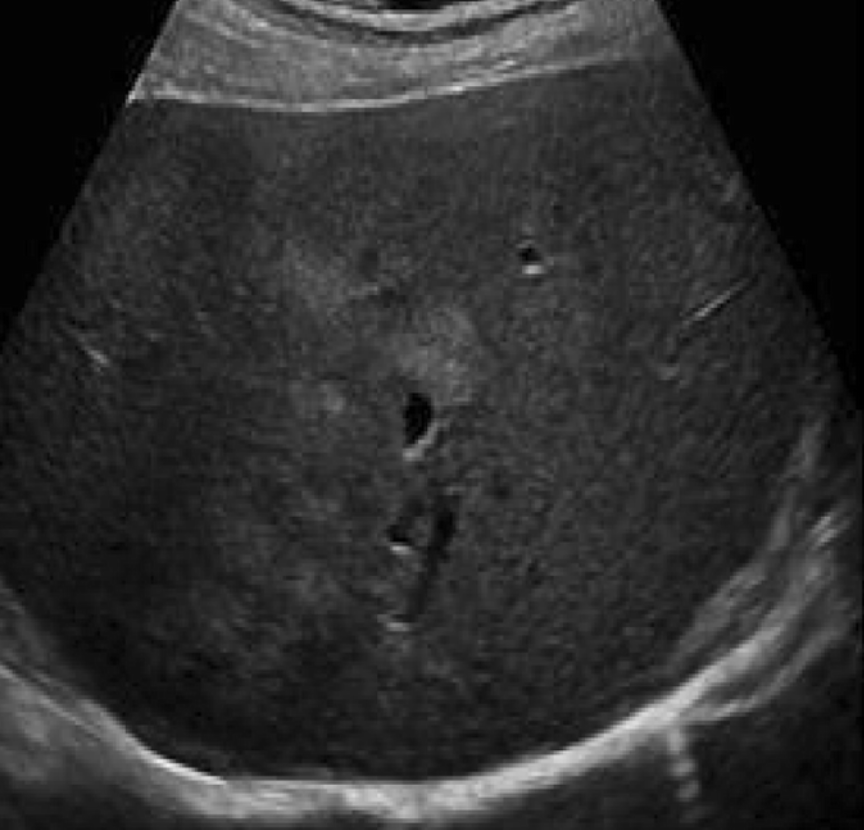Sunday Poster Session
Category: Liver
P1784 - Low ADAMTS13 Activity as a Prognostic Marker in Decompensated Cirrhosis: A Case Report
Sunday, October 26, 2025
3:30 PM - 7:00 PM PDT
Location: Exhibit Hall

Amanda Rigdon, MD
Lakeland Regional Health Medical Center
Lakeland, FL
Presenting Author(s)
Amanda Rigdon, MD1, Zein Barakat, DO1, Omar Zuhdi, MD1, Isabele Sanchez, BS2, Anas Bizanti, MD3
1Lakeland Regional Health Medical Center, Lakeland, FL; 2St. George's University, Merritt Island, FL; 3Lakeland Regional Health, Lakeland, FL
Introduction: ADAMTS13 (A Disintegrin and Metalloproteinase with a ThromboSpondin type 1 motif, member 13) deficiency has emerged as a significant prognostic biomarker in cirrhotic patients, potentially superior to traditional scoring systems. We present a case demonstrating the clinical utility of ADAMTS13 measurement in assessing disease severity and complications in decompensated cirrhosis.
Case Description/
Methods: A 70-year-old female with cirrhosis, heart failure with preserved ejection fraction, atrial fibrillation (not anticoagulated due to prior GI bleeding), and active alcohol use presented with acute heart failure exacerbation and abdominal distension.
Initial evaluation revealed hemoglobin 10.4 g/dL, hyponatremia (Na+ 129 mEq/L), hypokalemia (K+ 3.3 mEq/L), elevated proBNP (2176 pg/mL), and severe thrombocytopenia (73,000/μL). CT angiogram and venous ultrasound excluded thromboembolism. Abdominal ultrasound confirmed cirrhotic changes but no ascites.
Thrombocytopenia workup included fibrinogen levels, heparin-induced thrombocytopenia antibodies, and coagulation studies, all within normal limits. Notably, ADAMTS13 activity was significantly reduced. The patient developed persistent hypotension requiring investigation, revealing severe adrenal insufficiency (morning cortisol 3.47 μg/dL). She was treated with diuretics for volume overload and initiated on hydrocortisone replacement therapy.
Discussion: This case illustrates the clinical significance of ADAMTS13 deficiency in advanced cirrhosis. Low ADAMTS13 activity correlates with disease severity and serves as a superior prognostic marker compared to traditional MELD or Child-Pugh scores. The patient's constellation of findings—severe thrombocytopenia, portal hypertension evidenced by splenomegaly, and multi-organ complications including adrenal insufficiency—reflects the systemic nature of advanced liver disease.
ADAMTS13 deficiency in cirrhosis results from decreased hepatic synthesis and contributes to the hemostatic imbalance characteristic of this population. The severe thrombocytopenia, despite absence of other identifiable causes, likely reflects both This case underscores the importance of comprehensive evaluation when ADAMTS13 levels are markedly reduced, as it may herald multiple organ dysfunction and poor prognosis. Integration of ADAMTS13 measurement into routine cirrhosis management could enhance risk stratification and guide intensive monitoring protocols, potentially improving outcomes in this high-risk population.

Figure: Abdominal Ultrasound of Liver Cirrhosis
Disclosures:
Amanda Rigdon indicated no relevant financial relationships.
Zein Barakat indicated no relevant financial relationships.
Omar Zuhdi indicated no relevant financial relationships.
Isabele Sanchez indicated no relevant financial relationships.
Anas Bizanti indicated no relevant financial relationships.
Amanda Rigdon, MD1, Zein Barakat, DO1, Omar Zuhdi, MD1, Isabele Sanchez, BS2, Anas Bizanti, MD3. P1784 - Low ADAMTS13 Activity as a Prognostic Marker in Decompensated Cirrhosis: A Case Report, ACG 2025 Annual Scientific Meeting Abstracts. Phoenix, AZ: American College of Gastroenterology.
1Lakeland Regional Health Medical Center, Lakeland, FL; 2St. George's University, Merritt Island, FL; 3Lakeland Regional Health, Lakeland, FL
Introduction: ADAMTS13 (A Disintegrin and Metalloproteinase with a ThromboSpondin type 1 motif, member 13) deficiency has emerged as a significant prognostic biomarker in cirrhotic patients, potentially superior to traditional scoring systems. We present a case demonstrating the clinical utility of ADAMTS13 measurement in assessing disease severity and complications in decompensated cirrhosis.
Case Description/
Methods: A 70-year-old female with cirrhosis, heart failure with preserved ejection fraction, atrial fibrillation (not anticoagulated due to prior GI bleeding), and active alcohol use presented with acute heart failure exacerbation and abdominal distension.
Initial evaluation revealed hemoglobin 10.4 g/dL, hyponatremia (Na+ 129 mEq/L), hypokalemia (K+ 3.3 mEq/L), elevated proBNP (2176 pg/mL), and severe thrombocytopenia (73,000/μL). CT angiogram and venous ultrasound excluded thromboembolism. Abdominal ultrasound confirmed cirrhotic changes but no ascites.
Thrombocytopenia workup included fibrinogen levels, heparin-induced thrombocytopenia antibodies, and coagulation studies, all within normal limits. Notably, ADAMTS13 activity was significantly reduced. The patient developed persistent hypotension requiring investigation, revealing severe adrenal insufficiency (morning cortisol 3.47 μg/dL). She was treated with diuretics for volume overload and initiated on hydrocortisone replacement therapy.
Discussion: This case illustrates the clinical significance of ADAMTS13 deficiency in advanced cirrhosis. Low ADAMTS13 activity correlates with disease severity and serves as a superior prognostic marker compared to traditional MELD or Child-Pugh scores. The patient's constellation of findings—severe thrombocytopenia, portal hypertension evidenced by splenomegaly, and multi-organ complications including adrenal insufficiency—reflects the systemic nature of advanced liver disease.
ADAMTS13 deficiency in cirrhosis results from decreased hepatic synthesis and contributes to the hemostatic imbalance characteristic of this population. The severe thrombocytopenia, despite absence of other identifiable causes, likely reflects both This case underscores the importance of comprehensive evaluation when ADAMTS13 levels are markedly reduced, as it may herald multiple organ dysfunction and poor prognosis. Integration of ADAMTS13 measurement into routine cirrhosis management could enhance risk stratification and guide intensive monitoring protocols, potentially improving outcomes in this high-risk population.

Figure: Abdominal Ultrasound of Liver Cirrhosis
Disclosures:
Amanda Rigdon indicated no relevant financial relationships.
Zein Barakat indicated no relevant financial relationships.
Omar Zuhdi indicated no relevant financial relationships.
Isabele Sanchez indicated no relevant financial relationships.
Anas Bizanti indicated no relevant financial relationships.
Amanda Rigdon, MD1, Zein Barakat, DO1, Omar Zuhdi, MD1, Isabele Sanchez, BS2, Anas Bizanti, MD3. P1784 - Low ADAMTS13 Activity as a Prognostic Marker in Decompensated Cirrhosis: A Case Report, ACG 2025 Annual Scientific Meeting Abstracts. Phoenix, AZ: American College of Gastroenterology.
